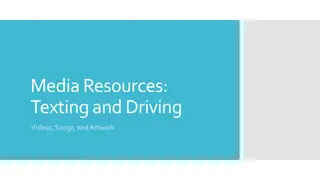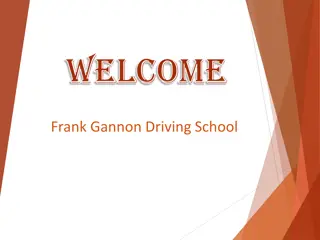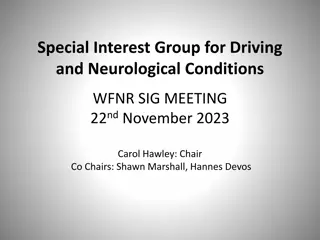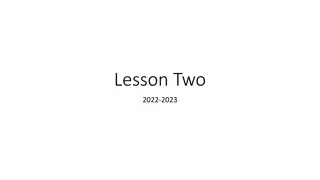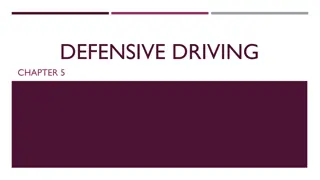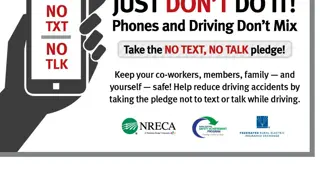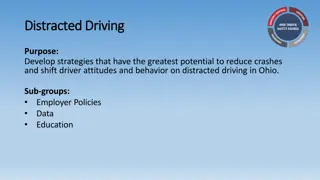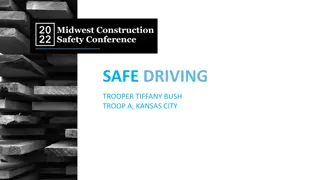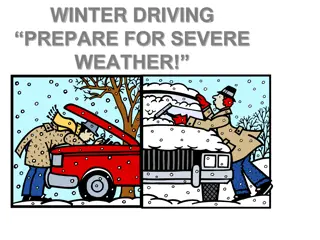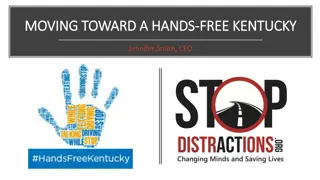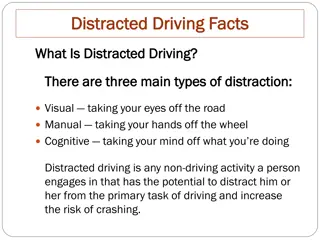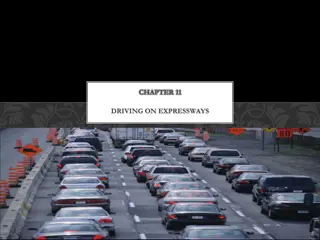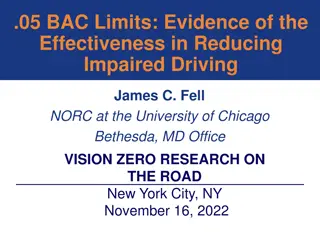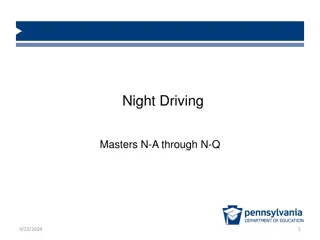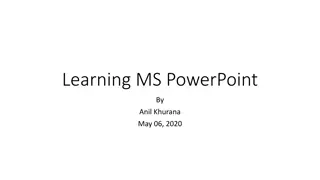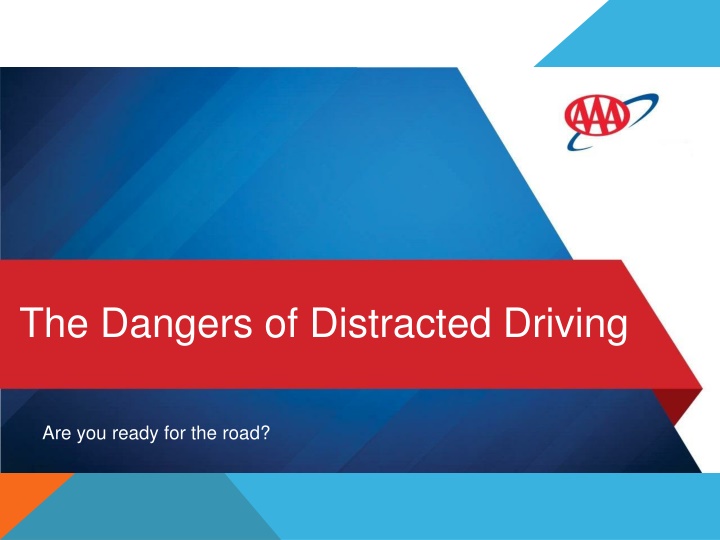
Understanding Distracted Driving Risks and Solutions
Discover the dangers of distracted driving and how various distractions such as texting, phone usage, eating, and grooming can significantly increase the risk of accidents. Learn about the impact of distractions on teen drivers and ways to stay safe on the road.
Download Presentation

Please find below an Image/Link to download the presentation.
The content on the website is provided AS IS for your information and personal use only. It may not be sold, licensed, or shared on other websites without obtaining consent from the author. If you encounter any issues during the download, it is possible that the publisher has removed the file from their server.
You are allowed to download the files provided on this website for personal or commercial use, subject to the condition that they are used lawfully. All files are the property of their respective owners.
The content on the website is provided AS IS for your information and personal use only. It may not be sold, licensed, or shared on other websites without obtaining consent from the author.
E N D
Presentation Transcript
The Dangers of Distracted Driving Are you ready for the road?
What is Distracted Driving? Distracted driving is any activity that diverts a driver s attention away from the task of driving. Common causes are cell phones and other wireless devices, eating, drinking, chatting with a passenger, reading a map, personal grooming, reaching for objects or looking at people or objects unrelated to the driving task.
TEXTING One of the most dangerous of all distracted driving activities Taking your eyes off the road for 2 seconds doubles your risk of being in a crash
Using a Cell phone or Smart phone In many states, it is a primary offense for a motorist to talk with a hand-held wireless telephone or electronic device while driving.
Eating & Drinking A recent study concluded that those who eat and drive increase the odds of a crash by 80% 65% of near miss crashes are caused by distracted drivers, fussing with food and drinks. Drinking coffee is the single most popular food item to have in the vehicle when it comes to distracted driving
Passengers With passengers in the car, teen drivers are almost six times more likely to perform an illegal maneuver and twice as likely to act aggressively before crashing than when driving alone.
Grooming & Other Distractions You should always do your grooming before you get in the car. We ve all seen men using razors and women putting on makeup while driving down the road. They re crashes waiting to happen.
Teen Drivers: Risk Profile What factors put teen drivers at risk? Teens are more likely to speed and allow shorter headways (tailgate), than older drivers Presence of other passengers, especially other teens in the car Distractions: cell phones, radio, etc. Not wearing a seat belt Inexperience- Immaturity leads to increased risk of speeding, distractions and other risky habits.
Practice Safe Driving Practice Safe Driving Use your cell phone for emergency situations only. ... You should limit the number of passengers, as well as the level of activity inside the car. Avoid eating while driving. Do your multi-tasking outside the car. Remember, driving requires your undivided attention.
Tips to help you prevent driving distracted Put it Away Place your mobile device out of sight to prevent temptation. Know Where You're Going If using a navigation system, program your destination before driving. Pull Over If you have to call or text while driving, pull off the road safely and stop first. Ask Passengers for Help If riding with someone, seek their help to navigate, make a call or send a message. Be a Good Passenger Speak out if the driver of your vehicle is distracted. Don't be a Distraction Avoid calling or texting others when you know they are driving. Turn on Do Not Disturb While Driving


